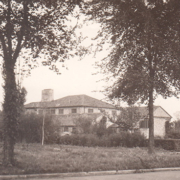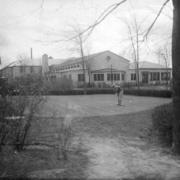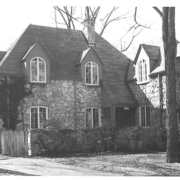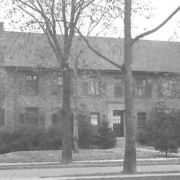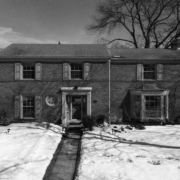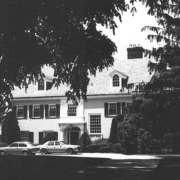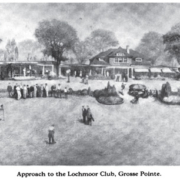Historical Architecture of Grosse Pointe – 50 Lochmoor
Last week we presented the work of Pollmar and Ropes. The firm was prolific in Detroit during the first 30 years of the 20th century, specializing in the design of apartments, stores, and industrial buildings. This week we head to the prestigious street of Lochmoor Blvd to explore 50 Lochmoor, designed in 1923, by the nationally renowned architect William Buck Stratton and his partner (at the time), Dalton J. Snyder.
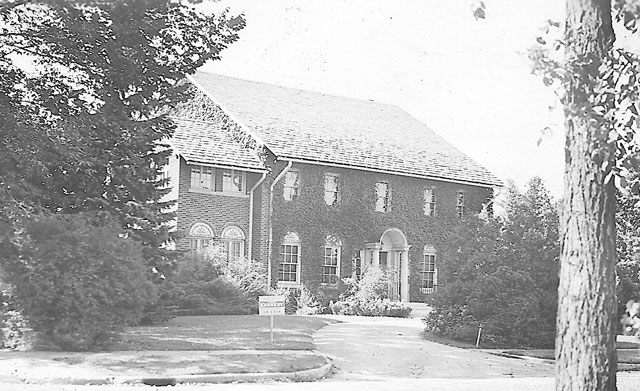
It appears William B. Stratton and Dalton J. Snyder became partners around 1915. The duo worked together for over a decade and designed many buildings in Detroit including the Women’s City Club, Ford Hospital, the Maybury Sanitarium, along with several movie theaters (the Center Theater, Home Theater, Jewel Theater, and the Rosedale Theater). Stratton and Snyder were also well known for their fine residential work. They completed several projects in Grosse Pointe, including:
- Lochmoor Club (the original clubhouse) – 1917-1918 (demolished in 1924 due to fire)
- 482 Rivard – 1918
- 365 University Place – 1919
- 4 Woodland Place – 1922
- 50 Lochmoor – 1923
- 502 Lincoln – 1923
- Lochmoor Club (the new clubhouse) – 1924 (demolished in 1968)
- 15366 Windmill Pointe – 1925
- 230 Lewiston – 1926
- 341 Lakeland – 1926
William B. Stratton
One of the most influential architects in Detroit during the early 20th Century, Stratton worked with some of the best designers in the city and often played a big part in influencing trends. Born in 1865 in Ithaca, New York, he acquired an early education in Elmira, and in 1881 graduated from Cornell University with a B.S. in Architecture. It is believed William Buck Stratton first appeared in the Detroit City directory in 1889, while he was working as a draughtsman for the prestigious architectural firm of Mason & Rice. Stratton was an innovative designer and has been described as having a vigorous creative imagination. He had a reputation for staying abreast of the latest trends in commercial and residential architecture; thereby allowing him to create designs that were ahead of their time. During his career, he worked with several partners on residential projects in Grosse Pointe that varied in style and size. Post 1932, Stratton, in the twilight of career, worked alone. He passed on March 13, 1938.
Dalton J. Snyder
Born Dalton J. Von Schneider on August 25 1880, Dalton Snyder (as he would later become known) was an extremely talented designer and had an incredibly productive career. His work covered a broad-spectrum of projects, including several prestigious residences in Grosse Pointe and Indian Village. Dalton J. Snyder lived in Grosse Pointe, having designed his own home, 255 Lewiston, which was completed in 1929. After Stratton and Snyder went their separate ways, Dalton Snyder became associated with the nationally renowned architectural Detroit based firm Giffels and Vallet. He passed Feb. 26, 1955.
Stratton and Snyder completed 50 Lochmoor in 1923, for George J. Hilsendegen. The exquisite 5,000 sq ft residence is arguably one of the more striking brick built Georgian Colonial style properties constructed in Grosse Pointe during the early 1920’s. What makes this house particularly impactful is the steeply pitched slate roof and the delicate limestone trim on the front elevation. The front of the home also has decorative Pewabic tile inserts in the arched sections above the first-floor windows (William B. Stratton’s wife, Mary Chase Stratton was co-founder of the Pewbic Pottery). The interior of this three-story home includes 9ft ceilings and impeccable wood detailing throughout. The 22’ x 14’ sq ft living room is the heart of the home; the 13’ x 15’ sq ft library has a fireplace and bleached mahogany paneling, while the 15’ x 19’ sq ft dining room and the kitchen (with its Kelvinator refrigerator) were finished to the highest quality. The second floor originally had four bedrooms and a sitting room, while the third floor was once the location of a 25’ x 24’ sq ft games room, with a bedroom and a bathroom for the maid.
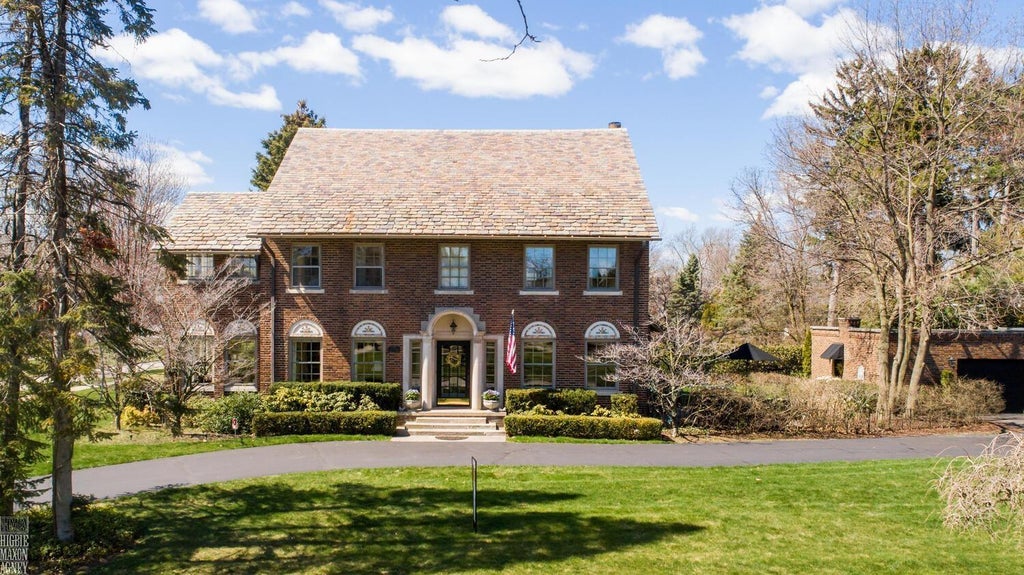

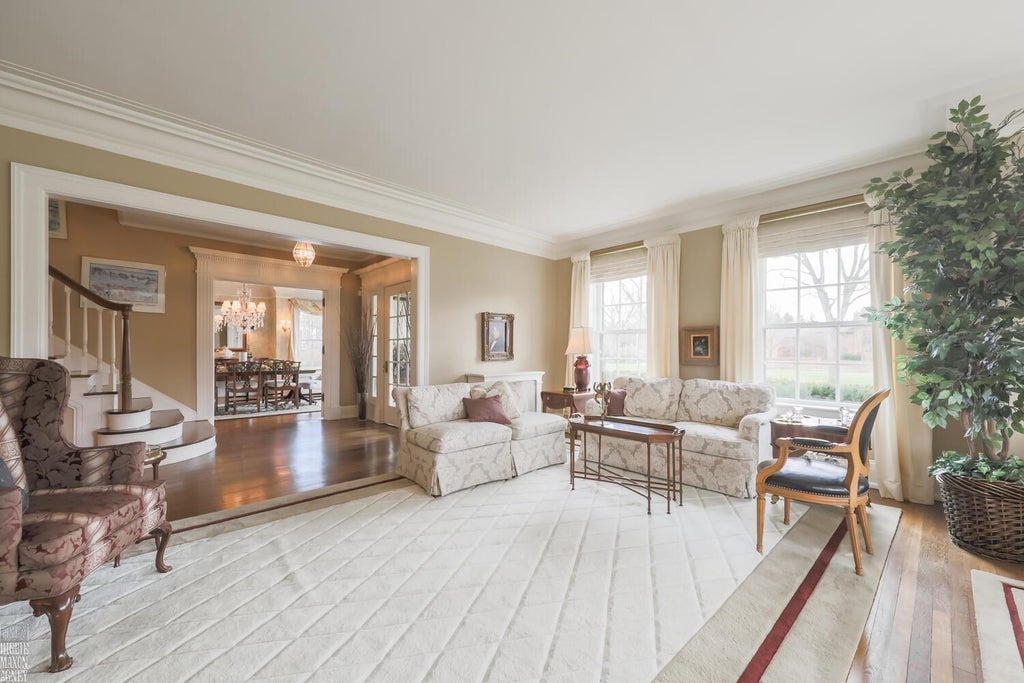
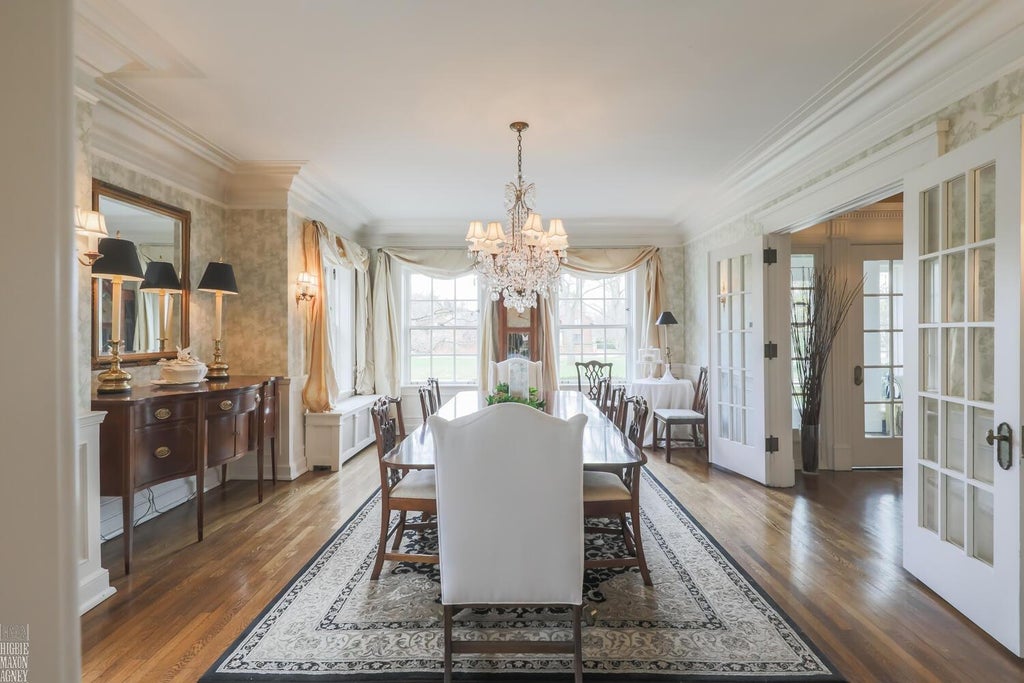
Original owner George Hilsendegen was born on 2 Apr 1864 in Detroit. During the early 20th century, he became one of the best-known bicycle dealers in the country and was listed in the handbook of the League of American Wheelmen (the league was the governing body for amateur bicycle racing in the U.S. during the late 19th century.) Membership of the league peaked at 103,000 in 1898. Source: Wikipedia.
Mr. Hilsendegen founded his bicycle business in January 1891. By 1894 a 25-mile road race over a course on Belle Isle was named the ‘Hilsendegen Road Race’ – 150 men were registered for the race, with all but fourteen starting. He was also responsible for importing a bicycle from England called the King of Scorchers, which only weighed 25 lbs. Given that most American bicycles at the time weighed 55 to 75 pounds, so they could stand up to American road conditions, it was reported “the King of Scorchers was a revelation to local wheelmen.” Source: Detroit Free Press (July 1931). Image courtesy of: onlinebicyclemuseum.co.uk George J. Hilsendegen was married to Elizabeth Schweitz Hilsendegen. Elizabeth passed on October 20, 1931. After Mr. Hilsendegen passed on 28 Jan 1942, 50 Lochmoor was listed for sale shortly after.
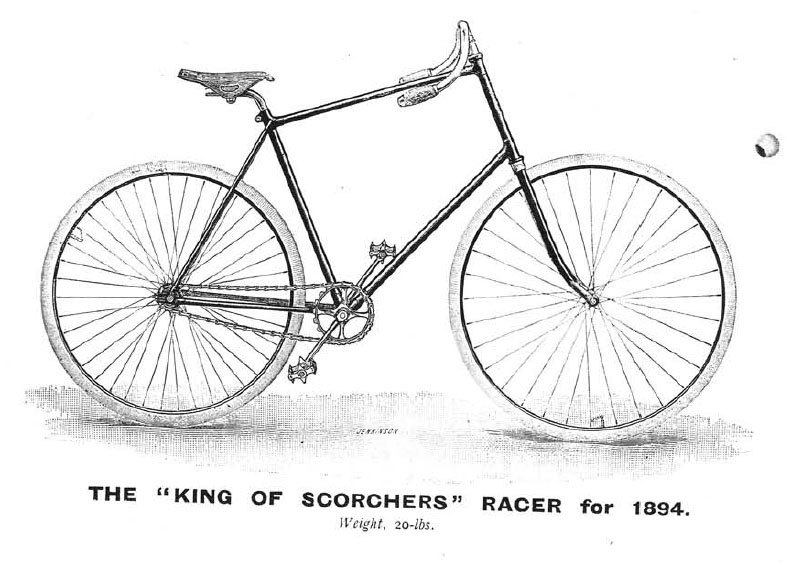
The street of Lochmoor Blvd in Grosse Pointe Shores is filled with a superb collection of architectural gems, in an array of popular styles. Number 50 does a fine job in representing the Georgian Colonial approach, and with two skilled designers such as Stratton and Snyder responsible for its creation, we shouldn’t expect anything less.
*Photos courtesy of the Higbie Maxon Agney archives unless stated.
** Research, information, and data sources are deemed reliable, but accuracy cannot be fully guaranteed.
Written by Katie Doelle
Copyright © 2024 Katie Doelle



